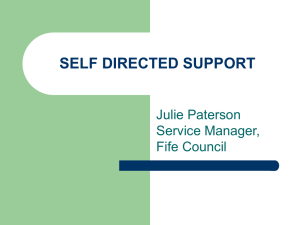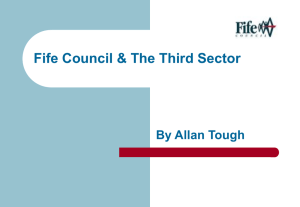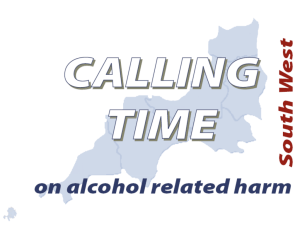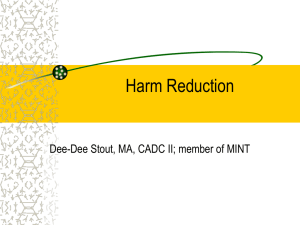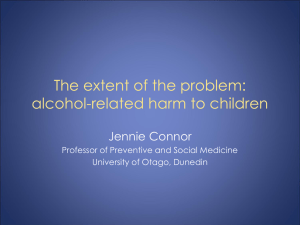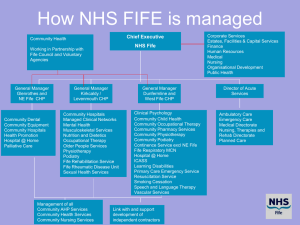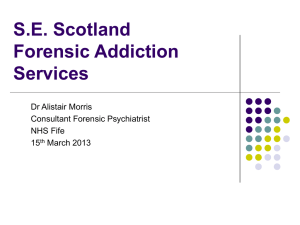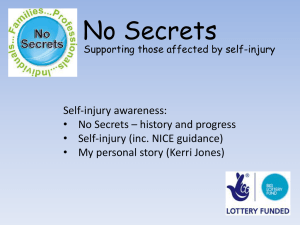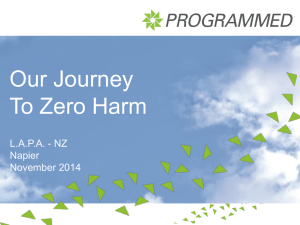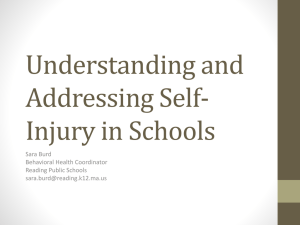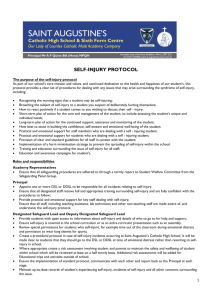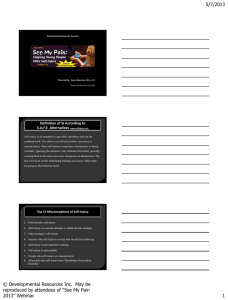Self-Harm
advertisement
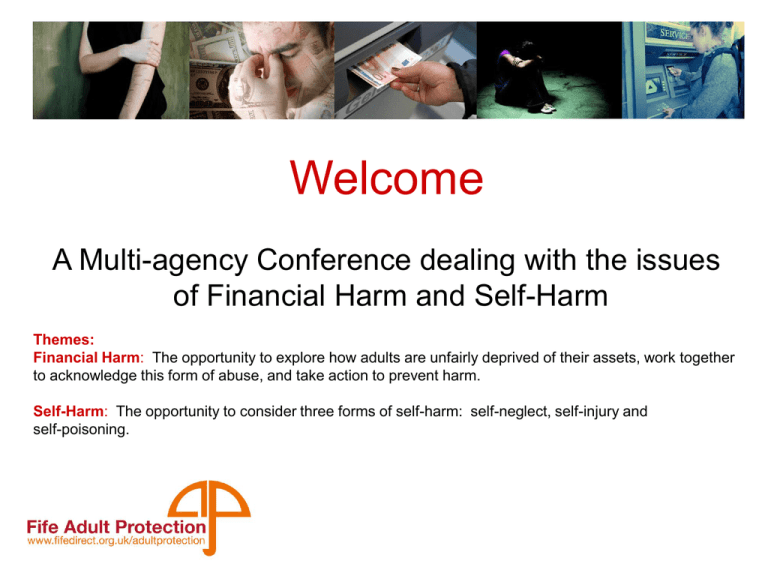
Welcome A Multi-agency Conference dealing with the issues of Financial Harm and Self-Harm Themes: Financial Harm: The opportunity to explore how adults are unfairly deprived of their assets, work together to acknowledge this form of abuse, and take action to prevent harm. Self-Harm: The opportunity to consider three forms of self-harm: self-neglect, self-injury and self-poisoning. Lynn Leitch Team Leader Housing and Neighbourhood Services Self-Neglect Introduction • What is Self-Neglect in a Housing Context? • Lifestyle Choice or Self-Neglect • Housing Support • Multi-Agency Involvement Definition of Self-Neglect “Failure by an individual to meet his or her own personal, physical and health needs leading to a deterioration in their condition affecting them and their environment” “Unable to safeguard their own wellbeing, property, rights or other interests” Causes of Self-Neglect • Motivation • Health – Mental or Physical • Substance Misuse • Limited Life Skills Lifestyle Choice or Self-Neglect • • • • • Independence When should we intervene? Endangering Neighbours Anti-Social Behaviour Public Health Issues MARK BACKGROUND Aged 30 - a former Big Issue seller Assault led to brain damage Own tenancy Substantial Income REFERRAL Complaints of Anti-Social Behaviour Mark ISSUES • Harassment of a vulnerable tenant • Damage to property • Nuisance to Neighbours • Capacity of tenant to say NO SOLUTIONS • Housing Support • Social Work Guardianship • Supported Accommodation in new area DOUG Background • 60 years old • Alcohol Dependency • One bed bungalow Referral • Referral from Social Work – Condition of house • Complaints from neighbours Doug Issues • Alcoholic • Poor Health • Limited mobility • Vulnerable • Very poor state of house and furniture Doug Solutions •Housing Support - Clean up, New Furniture •Social Work Intervention •Wet House - Plean Stirling Update •Asked to leave Wet House •Presented as Homeless •In temporary accommodation in Fife Housing Support • • • • • • Aim to help sustain tenancies Often first agency to get involved Work with the tenants to improve their situation Refer to other agencies Most effective solutions Multi-Agency Can only work with tenant, not force changes Conclusions • Self Neglect / Lifestyle Choice • Need to agree a criteria for intervention • Not every case fits the criteria set down in statute but may be as serious or worse than those that do • Balance the interests of the wider community as well as the individual • Multi-Agency Working is the way forward Louise Bowman Alcohol and Drug Partnership Policy Officer Self-Poisoning Substance Misuse intentional self poisoning? A presentation by : Louise Bowman Fife Alcohol & Drug Partnership Substance noun 1. a particular kind of matter with uniform properties •an intoxicating, stimulating, or narcotic chemical or drug, especially an illegal one: (oxford dictionary) “A drug, broadly speaking, is any substance that, when absorbed into the body of a living organism, alters normal bodily function “ (WHO - World Health Organisation 1969) Substance misuse is defined as intoxication by, or regular excessive consumption of and/or dependence on substances that have an effect on the brain, which leads to social, psychological, physical or legal problems. (NICE - National Institute for Health and Clinical Excellence) The most commonly misused drug is alcohol. Substance Misuse Prevalence in Fife Alcohol 90% of Fife’s adult population drink alcohol 31.5% drink at hazardous / harmful levels around 95,000 7.4% of are categorised as problem drinkers around 22,000 Substance Misuse Prevalence in Fife Drugs • 1.38% (3300 individuals) of Fife’s population (15-64) are estimated to be problem drug users in Fife (opiates and benzodiazepines) • No attempts have been made at a local level to determine prevalence rates for other substance use ‘Hidden Population’ Of the 3300 estimated problem drug users One third are in treatment Of the 22,000 problem drinkers in Fife One third are in treatment Without knowing the prevalence of problem use of other substances in Fife, the ‘hidden population’ cannot be established. Secrecy and shame accompany substance misuse Service Use Health Services GP and Nurse Consultations, Psychiatric Team Contacts, Prescribing & Pharmacy , Laboratory Tests, All Hospital departments, Specialist Services Hospital Admission Data 2005-2010 (majority A&E) Around 400 drug related admissions per year in Fife • Mainly male opiate drug users aged 25-34 Around 2200 alcohol related hospital admissions per year in Fife • Men over 40 account for half of all Fife discharges and the number increases with age with the over sixties being the highest • Women aged between 40 – 49 have the highest number of episodes for females in Fife in 2010 People from the most deprived areas in Fife have higher rates of substance related hospital admissions – cause and effect Social Care Services including Children and Families and Criminal Justice Prison Data 2011 • 50% of adult offenders serving a prison sentence in 2011 were drunk at the time of their offence • 44% were under the influence of drugs half of which committed their offence to buy drugs. Most report difficulties with substances on the outside impacting on employment and relationships Housing, Police, Specialist Substance Misuse Services, Education and Community Services Annual Societal Costs for Scotland sit at 3.2billion for drugs and 3.5 billion for alcohol Fife Drug Death Research 2005-2010 • 135 recorded drug deaths in Fife Does not include suicides or fatal accidents • Mean age 32 years old • 50% had overdosed (non fatally) at least once, the majority on multiple occasions where recorded most were not intentional • Average drug using career 17 years The majority of victims had experienced a combination of psychological and physical difficulties as well as life events, rather than a single problem alongside their substance misuse problems Alcohol Client Profiles Widow aged 65 (rich housewife with active social life) withdrew from activities after husband passed away “only a small sherry to help me through the day”. GP referral through identification from an Alcohol Brief Intervention (ABI) Male aged 24 (Engineer and Athlete) “One off binge drinking session – didn’t ever drink more than one or two” Criminal Justice referral for his single violent offence where victim sustained serious head injuries Female aged 44 (Support Worker) (victim of teenage sexual assault) “binge drinker consuming two bottles of wine before going out to the pub or three bottles of wine when off shift mid week” Her consumption caused her marriage to break down Referred herself to treatment as alcohol was impacting on her ability to hold down her job Susan Matson Clinical Nurse Specialist – Self-Harm Self-Injury Definition of self-harm “Self-harm is (non-accidental) self- poisoning or self- injury, irrespective of the apparent purpose of the act.” NICE - National Clinical Practice Guidelines Number 16, 2004 Common terms used to describe self –harm.(NICE) *Deliberate self - harm. *Intentional self - harm. *Para-suicide. *Attempted suicide. *Non-fatal suicidal behaviour. *Self-inflicted violence. How do people self –harm or inflict self-injury. *Self-poisoning and self-injury. *Self-injury also referred to as self-mutilation, self-injurious behaviour, non-suicidal self-injury, para-suicide. *Self-injury is intentional harm to the outside of the body often by cutting with a sharp object. *Also self-injury by burning, hitting/punching, picking, banging (head), scratching, jumping from height, swallowing objects. Less common types of self-injury. *Objects inserted under the skin (needles) *Insertion of foreign objects into orifices. *Cutting of face is less common. *Pulling out of one’s hair/eyelashes. *Tie something fairly tightly around parts of the body. Presentation prior to self- injury. *There can be very notable changes in a person’s presentation prior to self-harming where the person becomes withdrawn and isolated. *There can also be no outward signs prior to self- injury. Impact on Family *Family members struggle to live with a person who inflicts self-injury. *However many relatives are totally unaware of any self-harming. What is unhelpful? *Trying to force them to stop self-harming. *Things like hiding razor blades or constantly watching, don’t work and only lead to harming in secret, which can be more dangerous. Asking the person to promise not to self-harm *Again this doesn’t work but puts on a lot of emotional pressure and can set the person up to fail and feel guilty. Treating the person as ‘mad’ or ‘incapable’ *This takes away the person’s self-respect and ignores their capabilities and strengths. Functions served by self-injury. It is better to have a few more scars than be dead. Panicking and over–reacting. *This can be very frightening for the person. It’s better to try and stay calm and take time to discuss with them what should be done next. Telling the person off or punishing them in some way. *This can make the person feel even worse so could lead to more self-injury. Blaming the person for your shock and upset. *You have the right to feel these things, but it doesn’t help to make the person feel guilty about it. Jumping in with assumptions about why. *Different people have different reasons for self-harming. It’s best to let the person tell you why they do it. Just not talking about it. *This won’t make it go away but will leave the person feeling very alone. Melanie Durowse Training & Development Officer Adult Support & Protection Team Financial Harm What is financial harm? Financial harm is caused by the illegal or improper use of the individual’s resources (both financial and property) by another person without their informed consent or through the exercise of undue pressure. Fife Multi-Agency Adult Protection Guidance 2011 Prevalence •Financial harm is the 2nd most common form of mistreatment for those living at home (O’Keefe: 2007) •57,000 people aged 66 and over had experienced financial harm by a friend, relative or carer worker (NatCen: 2007) Prevalence •Including neighbours and friends, the number of people who have been financially harmed rises to 86,500 (NatCen: 2007) •60-80% of financial harm takes place in the home and 15-20% takes place in residential care (Crosby et al: 2007) Prevalence •50% of financial harm is by a grown-up son or daughter and further 20% is by another family member •It is likely that financial harm is under reported (NFA and ACPO:2009) What do we know about financial harm? Diversity of the types of harm •Not acting in the adult’s best interest •Coercion and persuasion •Misappropriation •Theft/Rogue trading •Mass marketing Victims of financial harm •Not in receipt of social care •In receipt of social care –Capacity –Dependency –Cognitive ability –Communication –Isolated –Trusting Impact on the adult •Suffer as much as those of violent crime (Deem: 2000) •Anger, outrage, anxiety, stress, fear and depression (Spalek: 2007) •Distress and betrayal, loss of self esteem and self confidence (SCIE: 2011) Impact on the public purse •Support for victims of fraud •Funding for victims of fraud •Professional reputations
